The 2 Basic SUP Fin Types
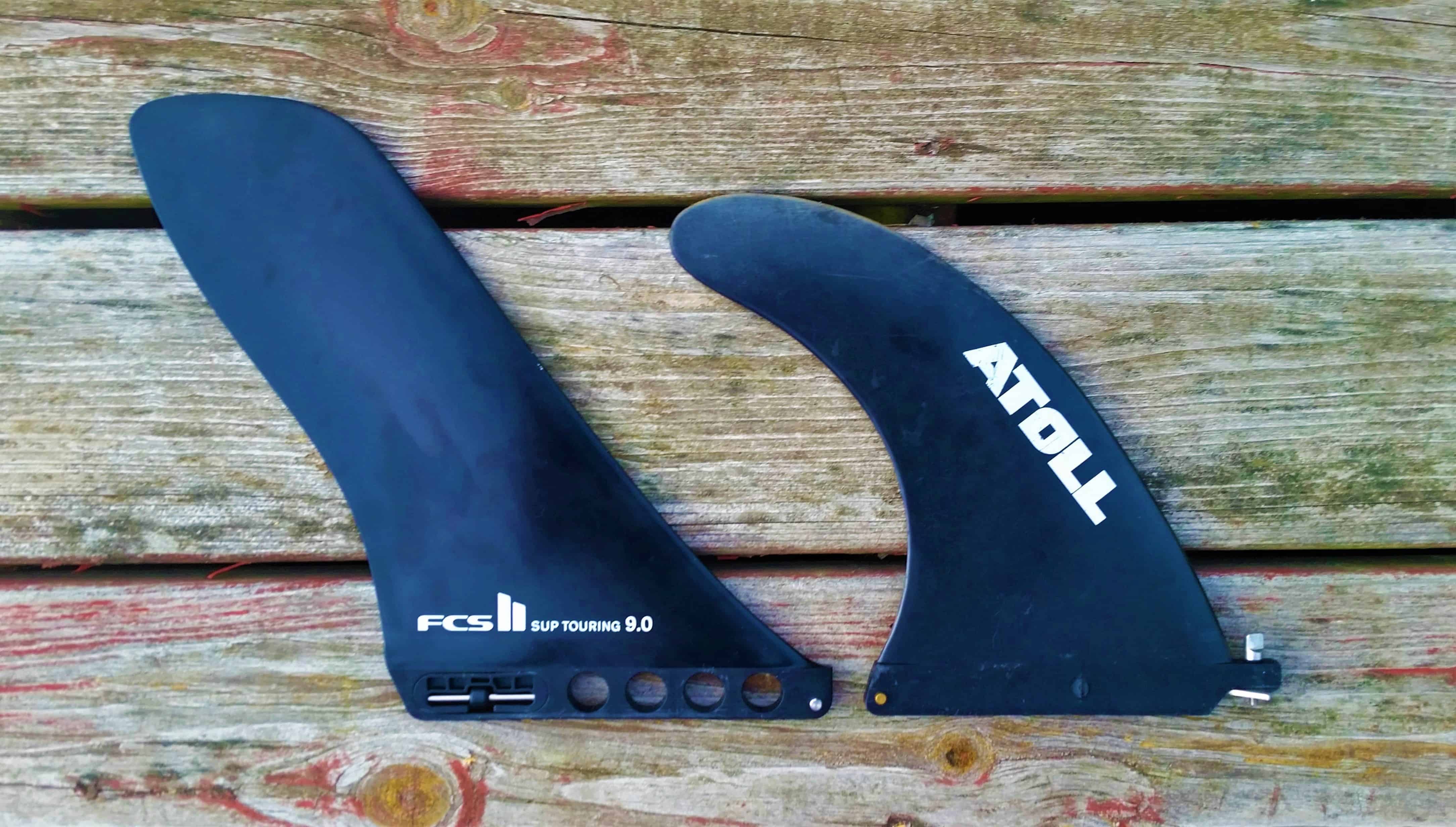
SUP Fins Matter
A paddle board must have fins. Without fins your paddle board will just spin in circles.
Fin size and shape affect the tracking, speed, stability and turning of your paddle board. The good news is that you can change the center fin and fine tune your paddle board to perform best for your activity.
Yes, you can swap fins! There are two basic paddle board fin types and knowing what they do could have a big impact on your paddle boarding.
Read: Fin Terminology
Read: Are Paddle Board Fins Universal?
Paddle board fins are available in many different sizes and shapes. All the different sizes and shapes are designed to affect performance in a specific way. But all fins will fall within these two broad categories. And for most paddlers the correct basic fin will be all they ever need.
The two basic sup fin shapes are:
1. All-Around/Surf Style
2. Touring Style
The Two Basic Fin Shapes
1. All-Around/Surf Style
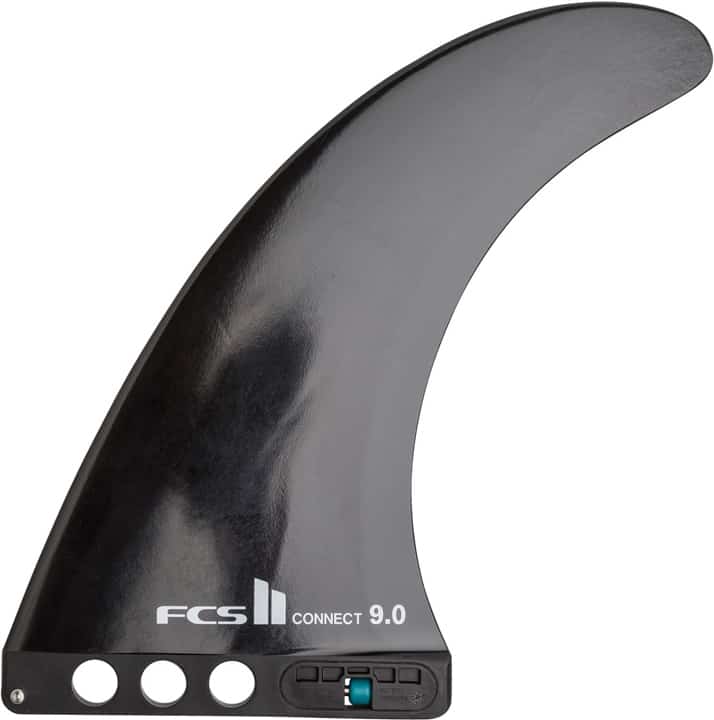
Most common type
The all-around/surf type fin is the most common type of fin. If you have an all-around paddle board this is most likely the style you have. These fins came from the surfboard industry.
This fin style helps a paddle board turn quicker and easier. They are still fairly wide at the base for decent tracking (the ability to move straight) and stability. However when the water gets choppy they are not as stable.
These fins are the best choice for all-around paddling, entry-level paddling, surfing and making quick turns and maneuvers. They also work well for the paddler who has a less powerful, slower, fluid paddling stroke.
Pros
*Turns & pivots easier
*Moves quicker
Cons
*Doesn’t track as well (maintain a straight path)
*Harder to remain stable in choppy water
2. Touring Style
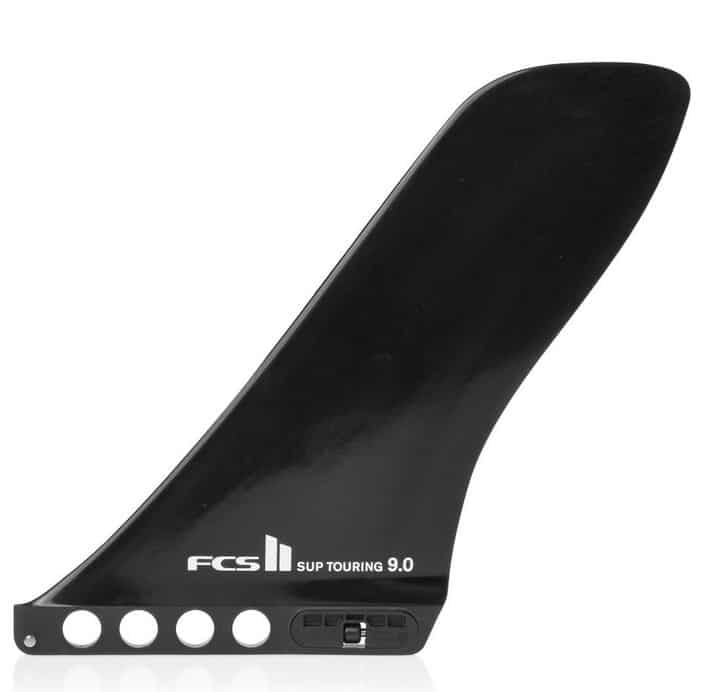
Typically these fins will come standard with a touring paddle board. They have more overall surface area. They have a wider base. They extend deeper into the water. And more surface area is concentrated in the rear. (tail of the board)
This all results in better tracking and more stability. You will also have more stability when the water gets rough and choppy. These fins are the best choice for those who paddle flat water, tour longer distances and paddlers with a deep powerful stroke.
Dig Deeper: Best Fin for Better Tracking
Pros
*Better tracking (the ease of moving in a straight line)
*More overall stability
*More stability in chop & swells
Cons
*Turns slower
*May feel sluggish (especially to paddlers with a weaker stroke)
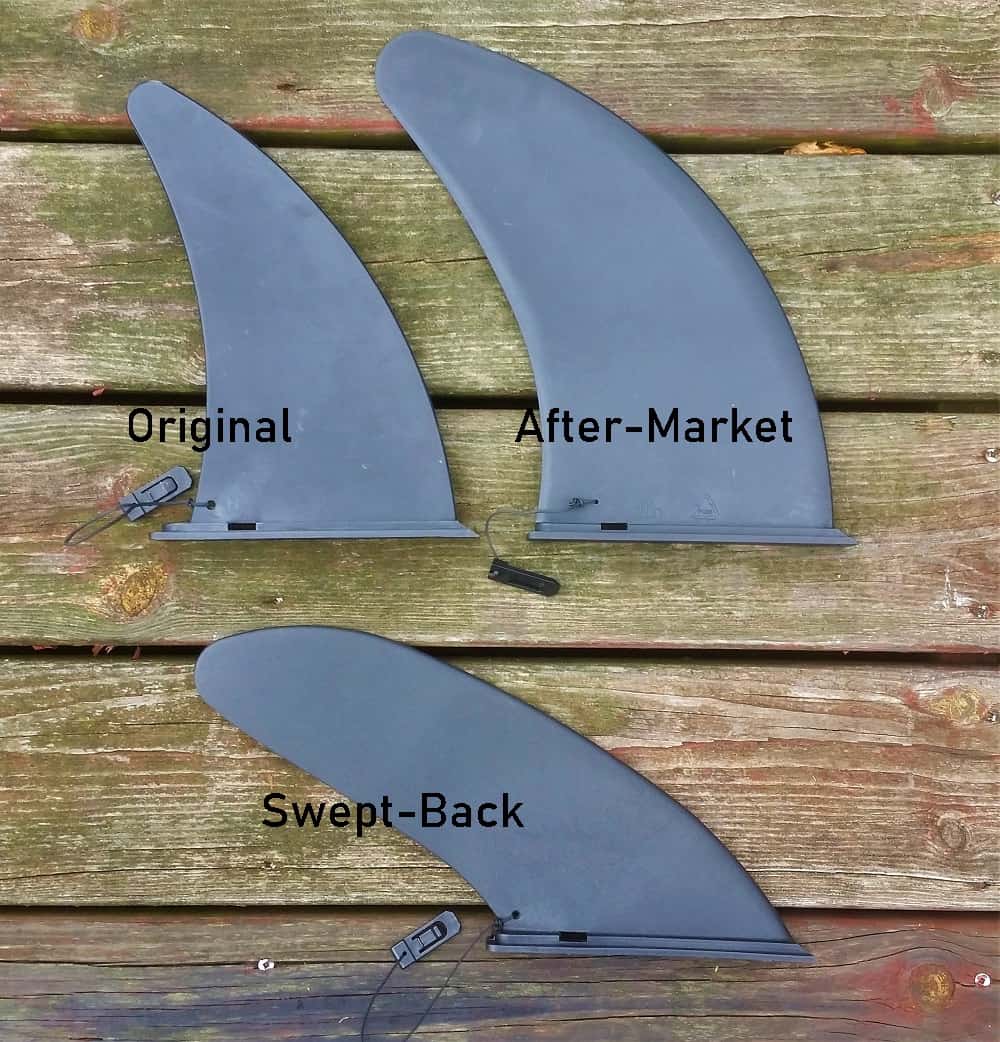
In the photo above you see three slide-in fins. Top left is the original fin. Top right is a much larger after-market fin. And the bottom fin is a swept-back weed-less fin.
As expected, adding the x-large after-market fin (top right) improved tracking over the original. I also noticed more stability.
The paddle board was not quite as fast but considering the noticeable improvement in tracking I am happy with the trade-off. Because I move through the water in a straighter line I get from point A to B faster despite moving a tad slower.
You can see how much more surface area the x-large after-market fin has over the original. And even though they are the same shape the size really makes a difference.
The swept-back fin (weed-less fin) improves tracking over the original, delivers better speed and still feels stable, but not as stable in choppy conditions as the extra-large fin.
The swept-back fin is good when you know you will be encountering lots of shallow water. And of course it’s great for going through thick weeds. In calm flat water I will use the swept-back fin. Overall the swept-back fin is my preferred fin.
How Fin Size and Shape Affect SUP Performance
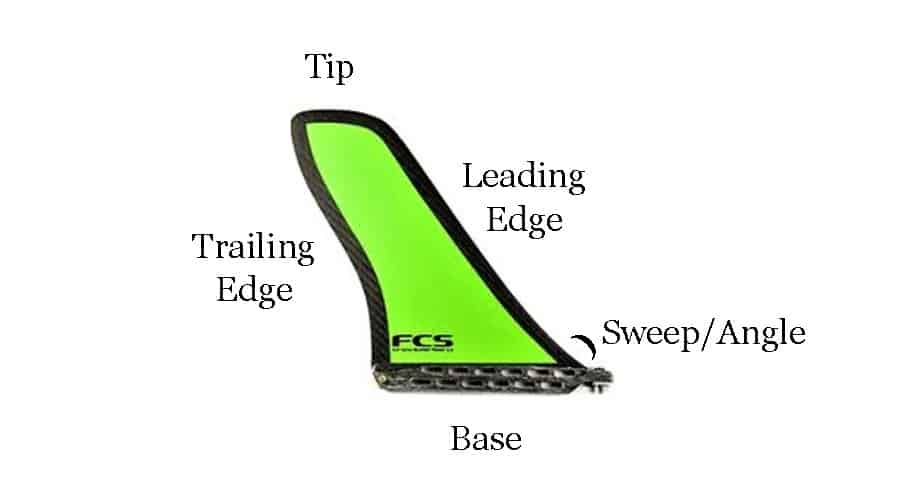
A. Fin Size (Overall Surface Area)
The overall surface area of a fin has a great influence on tracking, stability, turning and speed. When you paddle you put pressure on one side of the paddle board and the board will tip in that direction.
A fin with a larger surface area will counteract that paddling pressure. The board will not move from side to side as much when paddling. Therefore less tippy and more stable.
Plus with more fin surface area the tail will not slip sideways with each stroke keeping the board moving in a straight line. A paddler with a deep powerful stroke will benefit from a larger fin that offers more resistance to the extra force generated.
large fins are slower but more stable; small fins are faster but less stable
However more surface area creates more resistance when turning. So it pivots slower and takes more effort to turn with a large fin. More surface area will also create more drag as your board moves through the water and could make it feel sluggish.
Likewise, less overall surface will make it easier to turn but will reduce tracking and stability. In particular it will feel less stable in choppy conditions. It will also reduce some drag moving through the water making it quicker compared to a large fin.
A person with a less forceful, more fluid and slow paddling stroke may benefit from a smaller fin that reduces drag and moves quicker through the water.
B. Fin Shape (Where the Surface Area is Concentrated)
The fin shape determines where the surface area is concentrated and that affects performance too. For example, with more surface area in the rear or trailing edge your board will track better and feel more stable.
More area near the fin tip improves tracking
Think of a kite tail. The longer the tail on a kite the straighter it will move in the wind. Your fin acts the same way. The more surface area that extends out from the tail of your board the straighter you will move through the water.
A swept back leading edge reduces drag
The leading and trailing edge of the fin influence how easily a paddle board turns. They also affect how a fin releases water which affects speed.
Less area around the tip and trailing edge will allow a board to turn easier. As will a shorter leading edge and less sweep or angle.
Summary
In general we can say:
- A larger fin will improve tracking and stability
- The deeper a fin goes into the water the better for stability
- The wider the fin base the better for stability
- A smaller fin will reduce drag
- The more fin surface area near the tail of the board the better for tracking
If you have an all-around paddle board and will paddle only on flat water you will benefit by swapping to a touring style fin. You will notice and enjoy the difference in better stability and tracking.
…And on the days you plan on riding waves (or just play around making quick turns and pivots) you can swap back to the all-around/surf fin.
When I take out my Sea Eagle Needlenose 14′ (flatwater touring sup) I use the extra-large aftermarket fin in choppy conditions for more stability.
but in calm flat water I prefer the swept back (weedless) fin as I feel it gives me the best combination of stability, tracking and speed.
Remember:
There are many sup fin shapes and we only looked at the most basic.
US Fin Box or Slide-In Fin Box. It doesn’t matter what type of fin box you have. Both style of fin is available in all the fin box types.
Read: A Touring Paddle SUP May Be What You Need
Disclosure
Products I use are purchased with my own funds. I am never under an obligation to write a review about any product. This site expresses my own independent opinion.
Theseasonedsurfer.com is a participant in the Amazon Services LLC Associates Program, an affiliate advertising program designed to provide a means for sites to earn advertising fees by advertising and linking to amazon.com
